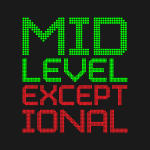Asked and Answered: The Bi-Annual Exception
Reader Cooper Smither asked…
Can [the bi-annual exception] be used in the same season a team uses their MLE? Can they be used if you are over the salary cap? Luxury tax?
While the Bi-Annual Exception may not have the high profile or heavy impact of some other exceptions in the CBA, it can still be incredibly useful in the right situation. In addition, the new CBA has made use of the BAE an important signpost for what a team plans to do in terms of the luxury tax.
How the Bi-Annual Exception works
The CBA dictates the total size of the Bi-Annual Exception each season– For the 2014-15 season, the BAE will have a first-year salary of $2,077,000.
Teams cannot use the Bi-Annual Exception in consecutive years– As one would expect from the name, teams cannot use all or part of the BAE two seasons in a row even if otherwise eligible.
Bi-Annual Exception contracts can be no longer than two years– Any contract signed using the BAE can be no longer than two years and the second year cannot have a raise or decline larger than 4.5% of the first season salary. One year contracts are fine. For example, Jermaine O’Neal signed a one year contract for part of the Bi-Annual Exception with the Warriors last summer.
Like the Mid-Level Exception and trade exceptions, the Bi-Annual Exception can be split– Even though the BAE’s lower total amount and year limit make it harder to actually fit two people, if teams can get players to agree they can do it.
Teams above the apron cannot use the Bi-Annual Exception– This CBA limited a few mechanisms that teams use to improve to only teams under the apron (a line exactly $4 million above the luxury tax) as a way of limiting the ways super spenders can acquire new players. As such, teams like the Nets cannot use the BAE this summer.
Using the Bi-Annual Exception triggers the hard cap for that league year– Like using the full MLE or acquiring a player via sign-and-trade, the BAE being reserved for teams under the apron means that teams who use the BAE are hard capped at the apron for the remainder of that league year to make sure no one takes advantage of timing to exploit the exceptions and then go over the apron. If you want to learn more about the NBA’s hard cap, please read my piece from last week.
Teams that use the Room Mid-Level Exception cannot use the Bi-Annual Exception– One new trick in the current CBA is the Room MLE, which teams deep enough under the cap get when they lose their exceptions. Since the BAE is one of the exceptions lost as a prerequisite to being able to use the Room MLE, teams cannot use both in the same league year. Similarly, a team cannot use the Taxpayer MLE and the BAE in the same season because teams over the apron cannot use the Bi-Annual Exception. However, that one can get more complicated because a team on the fringe could sign a player within the confines of the Taxpayer MLE but have it work for part of the Non-Taxpayer MLE if the situation presents itself since the Non-Taxpayer MLE is larger. As such, I do not draw the same hard line for the Taxpayer MLE and BAE that I do for the Room MLE. (AUTHOR’S NOTE: If this paragraph made sense, you must really love this stuff.)
The Bi-Annual Exception pro-rates starting on January 10 and expires on the last day of the regular season– An eligible team can use the Bi-Annual Exception once the season starts but it begins to pro-rate on January 10, reducing until the last day of the regular season.
Recent uses of the Bi-Annual Exception
Last season, five franchises used the Bi-Annual Exception which was the most since the 2009-10 season: the Nuggets on Nate Robinson, the Warriors on Jermaine O’Neal, the Pacers on CJ Watson, the Wizards on Eric Maynor (oops), and the Timberwolves on Ronny Turiaf. That also means those teams cannot use the BAE this season.
Chuck Myron of HoopsRumors has a nice compilation of the times the BAE has been used since 2006-07.


